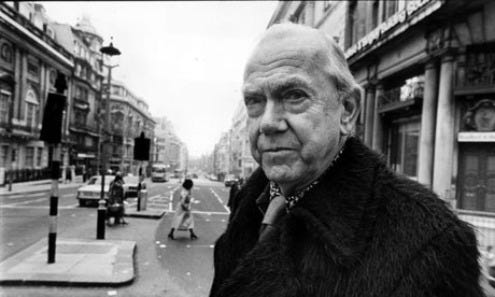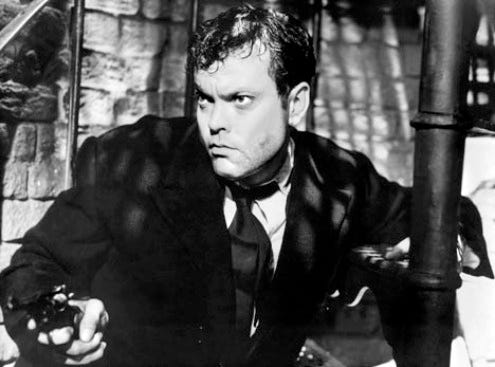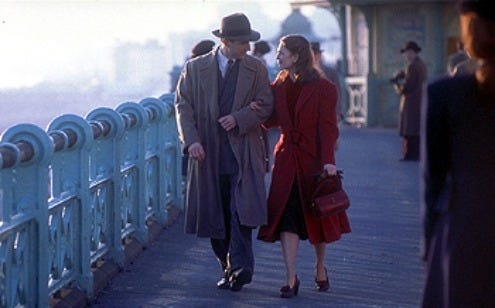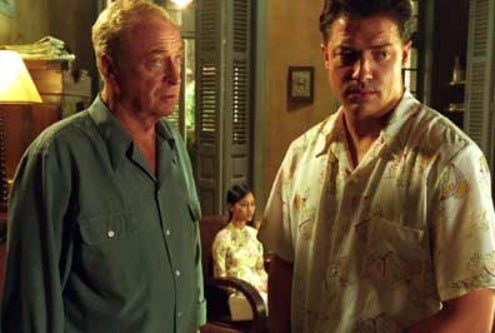Graham Greene
This month, a reimagining of "Brighton Rock" is being released in UK cinemas. Originally a novel written by one of the 20th century’s greatest writers, British novelist and playwright Graham Greene, it is a detective story set in the 1930s that battles with Catholic themes — good vs bad, right and wrong. Director Rowan Joffe moved the setting to Brighton in 1964 at a time when Mods and Rockers roamed the streets causing chaos and mayhem.

Graham Greene was born just after the turn of the century into a large family in Hertfordshire, England. Although an overview of his working life would eventually become associated with his successes in fiction writing, Greene was also a man with a journalistic background. While starting to churn out a number of novels, he worked as a sub editor for The Times and other local papers.
Aside from his literary accomplishments, Greene also had a darker side, which shows through in many of his novels. He was known for his controversial conversion into Catholicism after dating Vivien Dayrell-Browning, also a convert. They eventually married and although Greene had a string of affairs, many with prostitutes, he never divorced or separated from her. He also suffered from bipolar disorder, which affected his writing and personal life. A spell working for MI6 (supervised by a Soviet double agent no less) was used for the basis of many characters and places in his novels.
Most of his novels have been adapted into film, his first success was "Stamboul Train" (1932), a political thriller, which was adapted as the film "The Orient Express" (1934).
"Brighton Rock" (1947, 2011)

Brighton is a very British seaside town where people flock to during the summer holidays. It has a pier with arcades, hotels line the seafront, the pebble beach stretches for miles. Ice creams, fish and chip shops, stripy deck chairs — rival gangs warring in the streets? Greene used it as the backdrop to his underworld thriller "Brighton Rock," written in 1938. (The title also refers to a traditional seaside confection, a stick of flavored sugar with the name of the seaside town where it was bought stamped around the inner circumference.)
It was first adapted into a stage play starring Richard Attenborough as demonic teenage gangster Pinkie Brown. Through him, Greene explores Catholic morals of good vs. evil, right and wrong. Three years later, it was made into a film in 1947 with Greene co-writing the screenplay with Terence Rattigan and Attenborough reprising his central role. It was considered a highly successful example of British film noir and also part of the national identity when it comes to cinema in the UK.
Rowan Joffe’s re-imagining of Greene’s novel stars Sam Riley as Pinkie and Andrea Riseborough (of "Made in Dagenham" and "Happy-Go-Lucky") as Rose, Pinkie's girlfriend. These two relatively new actors are supported by performances from veterans of British cinema. Helen Mirren takes up the role of Ida, who pursues Pinkie throughout the film and attempts to protect Rose from his criminal ways.
She is drawn into the story by a chance meeting with Hale (Sean Harris), who betrayed the leader of the gang Pinkie now controls and is murdered by him shortly afterwards. Andy Serkis plays Colleoni, leader of a rival gang which is larger and more powerful. John Hurt also co-stars.
Joffe’s version has lost a little of its noir edge, perhaps because of its 1960s setting, but it still contains the core elements of a sinister crime thriller. He is a relative newcomer to directing as most of his experience working in film has been writing the screenplay for "The American" (2010) and co-writing "28 Weeks Later" (2007). "Brighton Rock" is his first major release.
"The Third Man" (1949)

Pulp fiction writer Holly Martins is invited to war-ravaged Vienna by a friend, Harry Lime (Orson Welles), with an opportunity for work. On arriving, he discovers that Lime was killed in a car accident while crossing the street. After the funeral, Holly is invited to speak at a book-club meeting where he meets Baron Kurtz (Ernst Deutch), who informs him that Lime’s dying wish was that he take care of Martins and Lime’s girlfriend, an actress named Anna (Alida Valli). Upon meeting Anna after a show, Holly becomes suspicious about the circumstances surrounding Lime’s death. Further investigation reveals there was a third man at the scene of the accident and a far more sinister plot lying under its circumstances.
Greene teamed up with well-known British director Carol Reed (who also directed "Oliver!" (1968)) to make three most distinctive films, "The Fallen Idol" (1948), "Our Man in Havana" (1960) and this classic film noir. The period immediately following the end of the second World War was considered British cinema's "golden age." Novels by upcoming literary greats like Greene were adapted for the big screen alongside established writers like Shakespeare and Dickens.
Films such as "The Third Man" and "Brighton Rock" are seen as demonstrations of excellent cinematic display. "The Third Man" is an edgy and complex thriller telling the story of moral corruption in Vienna, which has fallen into ruin after the war. It's no surprise it was voted the best British film of the 20th century by the British Film Institute. Wit and light humor are intermingled with a darker, more sinister plot which together makes a very rich combination.
"The End of the Affair" (1955, 1999)

One of Greene’s explicitly Catholic novels that is loosely based on experiences in his own life. In war-torn London, Sarah Miles (Deborah Kerr) begins an illicit affair with her neighbor, a rising novelist named Maurice Bendrix (Van Johnson). Both characters are modeled on Greene and his mistress at the time, Catharine Walston.
When a bomb hits his apartment Henry nearly dies and Sarah breaks off the affair. Later, his suspicions about the abrupt ending lead him to hire a private detective to investigate her. He discovers that she made a bargain with God that if he survived the bombing then she would end the affair.
After Sarah dies from pneumonia he comes to an understanding about her faith and Bendrix holds some belief in God.
Neil Jordan (‘The Crying Game’ (1992)) takes over as director in the 1999 adaptation, much more passionate and intoxicating than the first. Instead of dying immediately after pleading to God that if he lives she will end it, thus enabling her redemption as in Greene’s novel, the director adds in new events and begins their affair again years later when Sarah's husband (Stephen Rea) and lover (Ralph Fiennes) accidentally meet. Later, Sarah (Julianne Moore) dies slowly of a terminal illness, with no redemption for her and a betrayal of Greene's original novel.
"The Quiet American" (1958, 2002)

First co-written and directed by Joseph L. Mankiewicz, who is also responsible for "All About Eve" (1950) and "Guys & Dolls" (1955), "The Quiet American" was again adapted in Phillip Noyce's 2002 film — a more successful film with bigger stars taking up the central roles.
Two stories stand side by side — one a love triangle between Thomas Fowler (Michael Caine), a London Times correspondent, CIA operative Alden Pyle (Brendan Fraser) and a young and beautiful Vietnamese girl, Phuong (Do Thi Hai Yen). The other story is the unveiling of America’s involvement in the Vietnamese war of revolution from French colonial power.
There is a crucial difference between the two men that shapes the events of the film. Fowler’s involvement in the revolution is passive; he is there as an observer only, Pyle’s more direct involvement is working to steer the war toward America’s interests. Another catalyst in the plot is Pyle’s promise to Phuong of stability and marriage, something Fowler cannot provide since he is already in a loveless marriage with a Catholic woman back in London.


